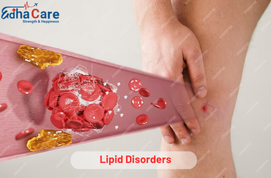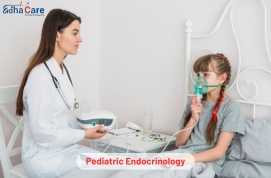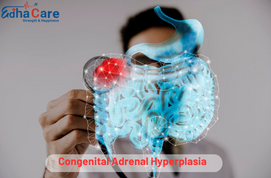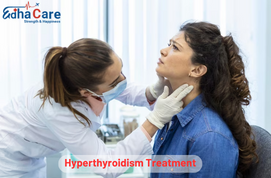Lipid Disorders

Lipid disorders, also known as dyslipidemias, encompass a group of medical conditions characterized by abnormal levels of lipids in the bloodstream. Lipids include cholesterol and triglycerides, which are essential for various physiological processes but become problematic when imbalanced. High levels of low-density lipoprotein (LDL) cholesterol, often referred to as "bad" cholesterol, increase the risk of atherosclerosis and cardiovascular disease. In contrast, low levels of high-density lipoprotein (HDL) cholesterol, the "good" cholesterol, can impair the body's ability to remove excess cholesterol. Dyslipidemias can result from genetic factors, poor diet, lack of exercise, or certain medical conditions.
Book an AppointmentAbout Lipid Disorders
Lipid disorders, or dyslipidemias, encompass several distinct types, each characterized by specific lipid imbalances. The primary types of lipid disorders are:
-
Hypercholesterolemia: This condition is marked by elevated levels of low-density lipoprotein (LDL) cholesterol, often referred to as "bad" cholesterol. High LDL levels increase the risk of atherosclerosis, which can lead to heart disease and stroke.
-
Hypertriglyceridemia: Elevated triglyceride levels are a hallmark of this disorder. High triglycerides can also contribute to atherosclerosis and are often associated with obesity, metabolic syndrome, and type 2 diabetes.
-
Low HDL Cholesterol: This lipid disorder involves abnormally low levels of high-density lipoprotein (HDL) cholesterol, the "good" cholesterol. Reduced HDL levels hinder the removal of excess cholesterol from the bloodstream, increasing the risk of cardiovascular disease.
-
Combined Hyperlipidemia: This condition involves elevated levels of both LDL cholesterol and triglycerides, making it a significant risk factor for heart disease.
-
Familial Hypercholesterolemia: A genetic disorder resulting in exceptionally high LDL cholesterol levels from birth, significantly increasing the risk of early heart disease.
-
Dysbetalipoproteinemia: A rare genetic disorder that causes abnormal levels of cholesterol and triglycerides due to mutations in lipoprotein metabolism.
Procedure of Lipid Disorders
The management of lipid disorders involves a multifaceted approach that combines lifestyle modifications and, in some cases, medication. Here's a general overview of the procedure for addressing lipid disorders:
-
Diagnosis: The first step is diagnosing the specific lipid disorder through blood tests that measure levels of cholesterol (including LDL and HDL) and triglycerides. Genetic testing may be considered in cases of familial hypercholesterolemia.
-
Lifestyle Modifications: a. Dietary Changes: A heart-healthy diet low in saturated and trans fats is recommended. This includes increasing the intake of fruits, vegetables, whole grains, and foods rich in omega-3 fatty acids. Reducing consumption of high-cholesterol foods and processed sugars is crucial. b. Exercise: Regular physical activity, such as aerobic exercises, helps improve lipid profiles by lowering LDL cholesterol and increasing HDL cholesterol. c. Weight Management: Maintaining a healthy weight, or achieving weight loss if necessary, can significantly improve lipid levels, especially in cases of hypertriglyceridemia.
-
Smoking Cessation: Quitting smoking is essential, as it can improve HDL cholesterol levels and reduce cardiovascular risk.
-
Medication: a. Statins: These drugs are commonly prescribed to lower LDL cholesterol. They work by inhibiting the liver's production of cholesterol. b. Fibrates: These medications are used to lower triglyceride levels and increase HDL cholesterol. c. Bile Acid Sequestrants: They help lower LDL cholesterol by binding to bile acids, which are used by the body to digest fats. d. PCSK9 Inhibitors: These newer medications are used when other treatments are ineffective, helping to lower LDL cholesterol levels significantly. e. Niacin: It is used to raise HDL cholesterol and lower LDL cholesterol. f. Other Medications: Depending on the specific lipid disorder and individual patient needs, other drugs like omega-3 fatty acid supplements may be prescribed.
-
Regular Monitoring: Patients with lipid disorders need periodic blood tests to assess the effectiveness of the chosen treatment and make necessary adjustments.
-
Genetic Counseling: In cases of familial hypercholesterolemia or rare genetic lipid disorders, genetic counseling can help individuals and families better understand their condition and its hereditary implications.
-
Lifestyle Maintenance: Long-term adherence to a heart-healthy lifestyle, including diet and exercise, is crucial for effectively managing lipid disorders and reducing the risk of cardiovascular events.
Require Assistance?
Get A Quick Callback From Our Healthcare Experts
Other Specilities We Cover

Pediatric Endocrinology

Congenital Adrenal Hyperplasia




